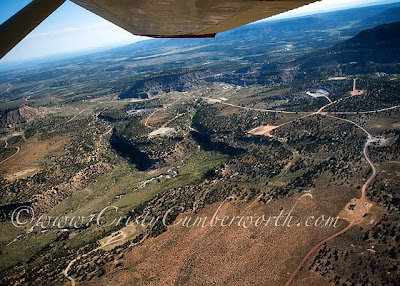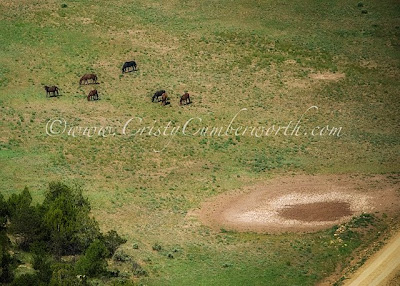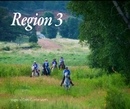My sis-in-law called, "You know where that little orchard is? The one over the hill from here along Pinon Hills? Well, there's a pretty big fire over there. You can see the flames in the trees along the creek jumping into the air!" So, I drove over there to rubberneck. Camera in tow, of course.

I'm attached to that little area of land. I grew up in that valley and used to ride up the wash under the Cottonwood trees almost every day for years to get out to Chokecherry Canyon. I knew the land owner. I knew the land before 30th street was put in right across the middle of his cattle field. I knew it before Pinon Hills, the northern bypass around town was built. I remember when it there was just a little dirt road that crossed the usually dry wash and went between the cattle field and the alfalfa field. The wash was often damp under the surface during the irrigating season as it was the end of the irrigation ditch. I saw that wash once, as it raged after a rainstorm, bury a truck up to the open windowsills in sand.

That wash helped cultivate my interest in wildlife. It often hosted deer, foxes, coyotes and a multitude of birds. The irrigation ditches around the outside of the alfalfa field (three of them right next to each other) honed my skills in controlling my horse and our trust in each other. We could cross the ditches but you had to jump, stop, jump, stop, jump. The inside ditch was smaller than the other two and the distance between each of them was just barely over a horse length.

I remember galloping around the alfalfa field, bareback, in the middle of night in the middle of winter after a fight with my brother. Then I just stopped and laid on her back and watched the clouds go by the full moon. It was cold!
That was long ago. Now that section of land is divided and belongs to the children of the original land owner. I no longer live in that valley so no riding access is needed there anymore. The cattle field, while smaller due to the road running through it is still there. The alfalfa field is gone and now there is a house and young orchard in part of it. The other part of it is a corn field in some years. Other years it does nothing. The land owners children take good care of it and haven't sold it off to developers but it's just not the childhood patch anymore.

It was sad to see all the trees on fire after knowing it so well the way it was for so many years. The fire was started by a controlled burn way in the middle of the field, all precautions taken. Sudden winds took the wrong spark into the trees and it was out of control fast. Once it started the trees, it ran up the tinder dry hill towards the houses. They evacuated five blocks and had two ladder trucks on the streets closest to the valley for keeping houses safe.

It was in the city limits but the only fire hydrants were in the subdivision on top of the hill so the local fire department called in to some of the county stations with tanker trucks. As the fire crept south down the wash closer Glade Road, they stopped all traffic on 3oth street and accessed a hydrant down there a ways too. They soaked the trees and ground within reach of that hydrant but fortunately the fire never made it that far. The winds died down and soon all was well.

I eventually went up on a hill to watch and ran into the oldest son of the original land owner and we ended up talking for a good long time. I hadn't seen him in well over 15 years so we had a good bit to talk about even though we have nothing in common and we never did much more than wave when I lived in that neighborhood. He told me how the land was divided between the siblings. Why the one sibling had abandoned his house and built another below it. (The ground settled by about 10 feet and rendered the old house to storage only).

He told me his dad had planted all those cottonwood trees, there were none north of the farmhouse! He pointed out all the area he cleared just a few years ago on his part of the place, just to avoid such a hazard. It was good to talk and do a little bit of reminiscing as we watched a good section of it burn away. It will be back. It will just take a while.


















